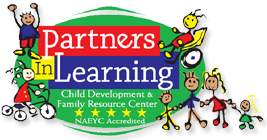Both sessions that I attended involved working with children with autism. PIL’s own Cindy Webb hosted one of the sessions on how to use intervention strategies most effectively when working with children on the autism spectrum. Part of her presentation involved these 12 tips.
1) Keep it Structured
a. Children with autism thrive in a structured environment
b. Establish a routine and keep it as consistent as possible
c. In a world that is ever changing, routine and structure provide great comfort to a child on the autism spectrum
2) Visual Supports
a. Define routines using visual cues
b. Children with autism learn faster and with greater ease when you use visuals
c. Visual supports maintain a child’s focus and interest. So what can you use visuals with? Just about anything!
3) Schedules
a. Children with Autism like order and detail. They feel in control and secure when they know what to expect. Schedules help children know what’s ahead.
b. Provide a predictable and consistent activity and classroom activity.
4) Reduce Distractions
a. Children with Autism find it difficult to filter out background noise, visual information, and smells.
b. Children with autism pay attention to detail. Wall charts and posters can be very distracting.
5) Concrete Language
a. Always keep your language simple and concrete. Get your point across in as few words as possible.
b. Give clear choices and try not to leave choices open ended. You’re bound to get a better result by asking “Do you want to draw” than by asking “What do you want to do now?”
c. Avoid using idioms. “Put your thinking caps on,” “Open your ears,” and “Zipper your lips” will leave a student completely mystified and wondering how to do that.
6) It’s Not Personal
a. Children with autism are not rude. They simply don’t understand social rules or how they’re supposed to behave.
b. As an example, if you enthusiastically greet a child with autism and you get the cold shoulder, create a “Social Story”
c. Social stories are simple descriptions of everyday social situations, written from a child’s perspective. Social stories can be used in different situations. For example, social stories can help a child prepare for upcoming changes in routine, or learn appropriate social interactions for situations that they encounter.
7) Transitions
a. Children with autism feel secure when things are constant. Changing an activity provides a fear of the unknown. This elevates stress which produces anxiety.
b. Give ample verbal and visual warning. When you ask a child to transition from a preferred activity, they might be very resistant if they have no idea when they will be allowed to resume.
c. Using schedules helps with transitions too as students have time to “psyche themselves up” for the changes ahead.
d. If a child is particularly struggling with a transition, it often helps to allow them to hold onto a “transitional object” such as a preferred small toy or an object of their choice. This helps a child feel in control and gives them something to look forward to.
8) Establish Independence
a. Teaching students with autism how to be independent is vital to their well-being. While it is tempting to help someone that’s struggling to close a zipper, it’s a much greater service to calmly teach that person how to do it themselves.
b. Making decisions is equally important and this begins by teaching students to make a choice. Offer two choices.
c. Give choices in which you win in both situations, for example: “Suzy you can either come to the art table or go to blocks” or “Billy you can come to bed in 5 minutes or now” (use this one 5 minutes until bedtime).
d. Nothing works in a day whether it’s a diet, an exercise plan or learning to behave in class.
e. Make sure you allow ample time before you abandon an idea. Remember that consistency is a key component of success.
9) Rewards Before Consequences
a. Rewards and positive reinforcement are a wonderful way to increase desired behavior. Help students clearly understand which behaviors and actions lead to rewards.
b. Every reward should be showered in praise.
10) Creative Teaching
a. It helps to be creative when you’re teaching students with autism.
b. People on the spectrum think out of the box and if you do too, you will get great results.
c. Often, people with autism have very specific interests. Use these interests as motivators.
11) Use Multi-Sensory Strategies
a. Hugs
b. Swings
c. Carry heavy objects
d. Sensory bag
e. Squeeze
f. Sign language
g. Music
h. Massage
i. Textures
j. Soft/active areas
12) Don’t Sweat the Small Stuff
a. The goal for all children to be happy and function as independently as possible so pick your battles.
Katherine Zink, Community Inclusion Assistant











This has helped me out soooooo many great ideas thank you so much!! Absolutely wonderful!!!
ReplyDelete